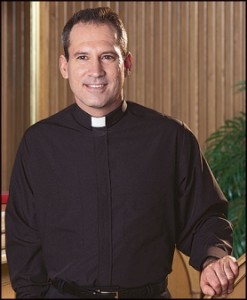This picture is copied from a catalogue that sells clergy shirts. It illustrates the mystery I became involved in today. I received a common page through the Call Center. A patient wanted to see a priest. Our protocol is for a chaplain to visit the patient first, and then when we call the priest we can give him a better description of the reason he is needed. This patient was not defined as Catholic on our census list, so I checked at the nurse’s station before visiting the patient to make sure I had been given the correct room number from the operator. The room and number and patient were confirmed. When I saw him he told why he wanted to see the priest. I exited the room to contact the priest. I was surprised to learn from the priest that he had been there at 5:30 AM at the request of one of our chaplain volunteers. When I told the patient he was sleeping when the priest we there he assured me he had not gotten any rest and there must be a mistake. So I went to the nurse’s station to see what they knew about the 5 AM request for a priest. The staff noticed the priest arrive and also saw that he went to the wrong room. So I called the priest back and explained what had happened. The priest assured me he had gone to the correct room. I then went back to the patient and told him the priest would be into see him in the afternoon. I also told him requests for a priest are rarely as confusing to arrange as this one was.
When I asked him what I could do for him in the meantime, he appeared surprised that I was still willing engage in conversation after we finally had the priest request item solved. He did share with his fears and how he prefers to be independent, and his illness is keeping him from being independent. I assured him that losing independence is something that most people do not like when it happens to them. He let me pray with him and through the tears that flowed I could tell the visit had helped him release some of his pent up emotions.
I marveled about the visit as I looked back on it later in the day. The first portion of the visit had me feeling more like a private detective than a chaplain. The second part of the visit suddenly morphed into an opportunity for me to help the patient process emotions. That opportunity to process emotions could have been lost if I had stopped at the fact finding segment. But once I was able to move beyond fact finding the patient and I were able to form a relationship where enough trust was present to allow honest sharing of emotions to take place. This encounter proves again that one never knows what unexpected turns will take place in task of meeting the patient’s needs.

